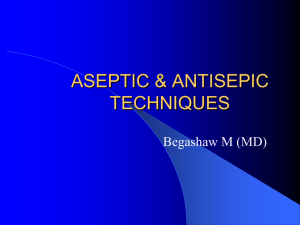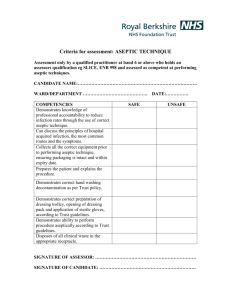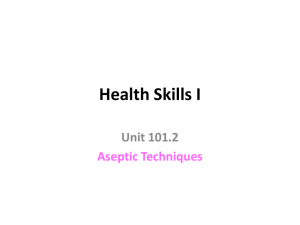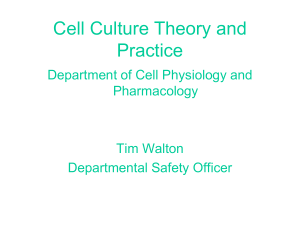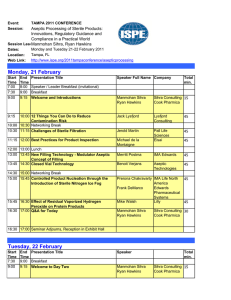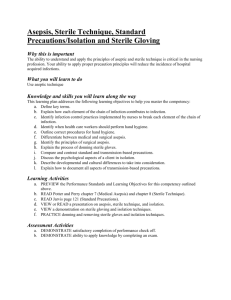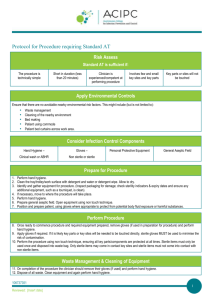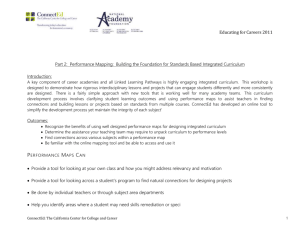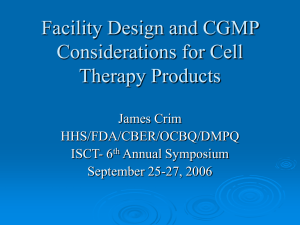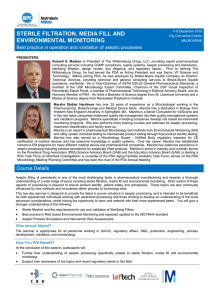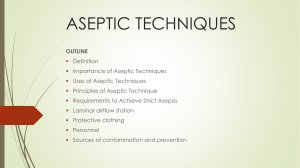File
advertisement
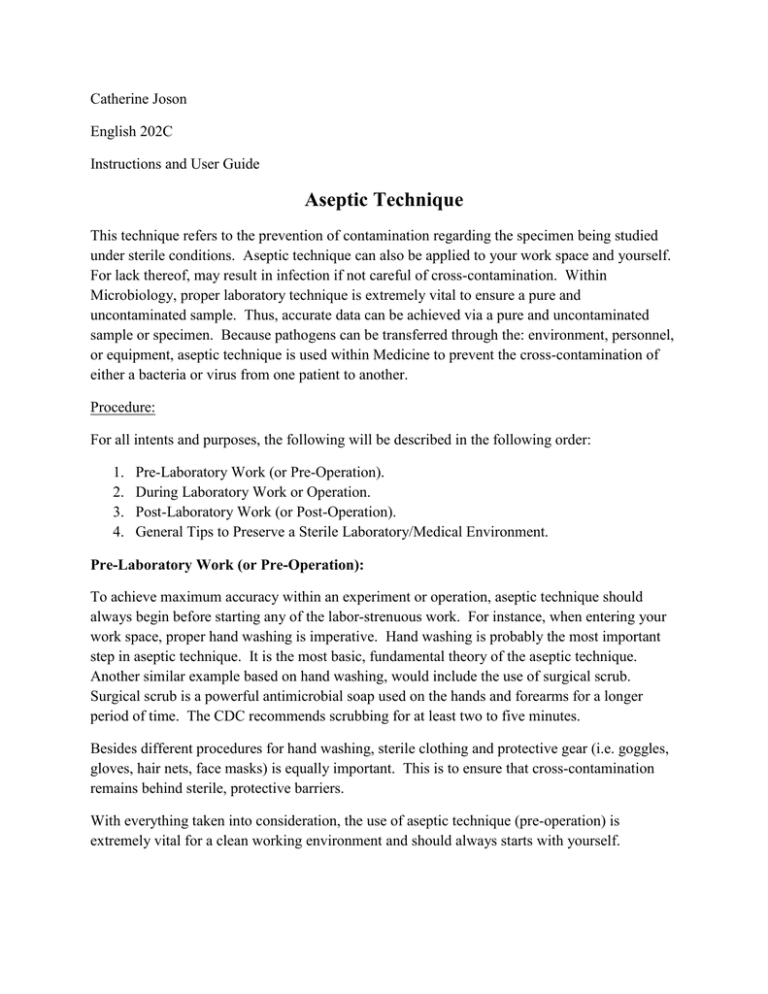
Catherine Joson English 202C Instructions and User Guide Aseptic Technique This technique refers to the prevention of contamination regarding the specimen being studied under sterile conditions. Aseptic technique can also be applied to your work space and yourself. For lack thereof, may result in infection if not careful of cross-contamination. Within Microbiology, proper laboratory technique is extremely vital to ensure a pure and uncontaminated sample. Thus, accurate data can be achieved via a pure and uncontaminated sample or specimen. Because pathogens can be transferred through the: environment, personnel, or equipment, aseptic technique is used within Medicine to prevent the cross-contamination of either a bacteria or virus from one patient to another. Procedure: For all intents and purposes, the following will be described in the following order: 1. 2. 3. 4. Pre-Laboratory Work (or Pre-Operation). During Laboratory Work or Operation. Post-Laboratory Work (or Post-Operation). General Tips to Preserve a Sterile Laboratory/Medical Environment. Pre-Laboratory Work (or Pre-Operation): To achieve maximum accuracy within an experiment or operation, aseptic technique should always begin before starting any of the labor-strenuous work. For instance, when entering your work space, proper hand washing is imperative. Hand washing is probably the most important step in aseptic technique. It is the most basic, fundamental theory of the aseptic technique. Another similar example based on hand washing, would include the use of surgical scrub. Surgical scrub is a powerful antimicrobial soap used on the hands and forearms for a longer period of time. The CDC recommends scrubbing for at least two to five minutes. Besides different procedures for hand washing, sterile clothing and protective gear (i.e. goggles, gloves, hair nets, face masks) is equally important. This is to ensure that cross-contamination remains behind sterile, protective barriers. With everything taken into consideration, the use of aseptic technique (pre-operation) is extremely vital for a clean working environment and should always starts with yourself. During Laboratory Work (or Operation): Throughout the lab work, cleanliness and awareness is always at top priority. A suggestion to keep your lab area “aseptic-approved” is to dispose of unwanted material properly and efficiently. That is to say, removal of hazardous waste should be quick and precise. Another suggestion is to immediately clean your work area. This also aids in the flow of your work; for when a clean work area is obtained, it is easy to see what the next step is. Post-Laboratory Work (or Operation): If cleanliness and organization is kept throughout the lab work, post-lab work (or operation) will not be as arduous. To achieve an uncontaminated environment, sterilization is key. Sterilization is a process that eliminates all microorganisms. General Tips to Preserve a Sterile Laboratory/Medical Environment: When a sterile environment/field is achieved, remember to only allow sterile items within that field. Recognize and maintain the sterile area. A sterile barrier that has been penetrated (cut or torn) is now considered contaminated. Be conscious of your every action. Summation: In conclusion, aseptic technique is very efficient in various degrees depending on the type of “job”. A sterile environment ensures a safe working area (for both the specimen and yourself) and most importantly, accurate readings. References: Caprette, David R. "Methods Manual – Applied Microbiology." Coté, Rosalie J. "Aseptic Technique for Cell Culture." Www.currentprotocols.com. May 2001. Current Protocols in Cell Biology. 26 Feb. 2010. Science Service. "ISEF rules: Potentially hazardous biological agents."
